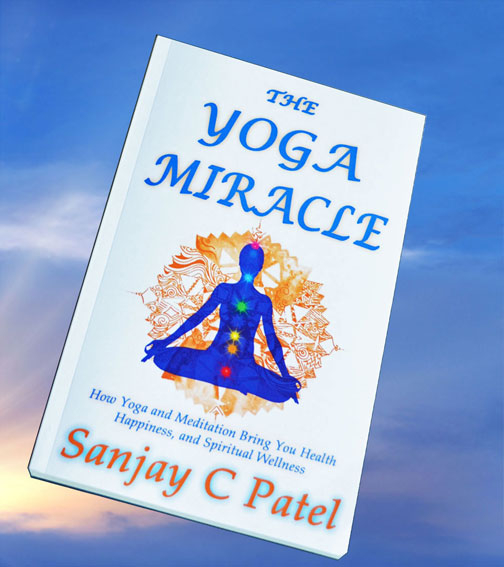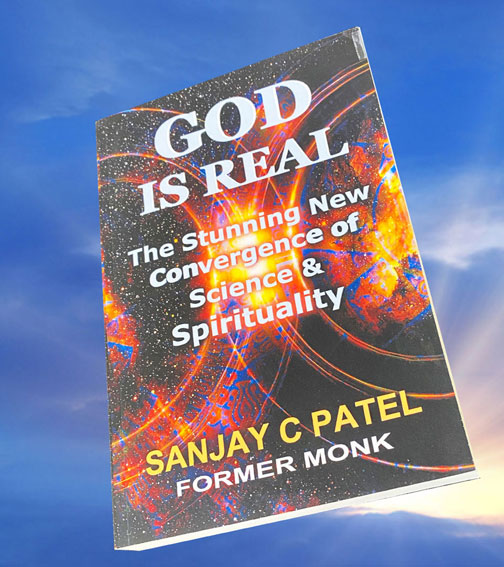
The Astonishing Scientific Worldview of Ancient Yogis and Israelites
Have you ever pondered how ancient wisdom intertwines with modern scientific discoveries?
Today, we’re witnessing remarkable alignments emerging due to groundbreaking advancements in science. These connections unveil how age-old insights resonate with contemporary understanding. Notably, the surprisingly modern worldview of the ancient yogis has captivated scientists, highlighting a profound synergy between ancient teachings and modern knowledge.
Renowned figures like Nobel laureates Erwin Schrödinger and Werner Heisenberg, Fundamental Physics Prize recipient Andrei Linde, and distinguished astrophysicists Carl Sagan and Fritjof Capra have all highlighted these intriguing connections in their papers and publications since 1945.
I still vividly recall how, as a child, I first became aware of this fascinating intersection between science and spirituality. In London, UK, my two brothers and I were walking up a small hill towards Wembley Park train station, near Britain’s famous football stadium. As I walked in rare silence, my brothers excitedly discussed a new book by a Western scientist named Fritjof Capra. He was making headlines for demonstrating how Eastern beliefs intersected with modern scientific truths. “Everyone is talking about it,” they said, and their enthusiasm was contagious. I found myself excited too.
Now, decades later, it feels surreal to contribute in a way that elevates those original discoveries to a whole new level, bridging ancient spiritual insights and modern science.
Interestingly, in my youth, I was actually skeptical about the connections between science and spirituality. I had concluded that they were two exclusive fields, each operating in its own realm.
Exploring Capra and Sagan’s Perspectives
Returning to Capra and Sagan’s views on yoga’s worldview, let’s delve into what they observed.
Fritjof Capra, in his 1975 work, noted:
“This idea of a periodically expanding and contracting universe, which involves a scale of time and space of vast proportions, has arisen not only in modern cosmology but also in ancient Indian mythology… evolutionary cosmologies which come very close to our modern scientific models.”
Similarly, Carl Sagan remarked in 1980:
“It is the only religion in which the time scales correspond, no doubt by accident, to those of modern scientific cosmology. Its cycles run… longer than the age of the Earth or the Sun, and about half the time since the Big Bang. And there are much longer time scales still.”
Two Key Observations
There are three important points to consider regarding their statements:
1. Reevaluating Ancient Mythology
Both scientists referred to the ancient insights they came across as “mythology” or suggested any alignment with modern science was “no doubt by accident.” That was in the 1980s. Today, there are hundreds of such agreements documented and many published in major, peer-reviewed scientific journals. These numerous parallels suggest that it’s neither mythology nor mere coincidence. It’s becoming evident that ancient texts may hold more scientifically relevant information than previously acknowledged.
2. Acknowledging Other Spiritual Traditions
Although Sagan was correct about the grand time scales in yoga texts, his view that it’s the only religion with such insights might be limited. The yogis weren’t the only ones to capture the big picture. Ancient Israelite traditions also seem to have profound cosmological understandings. Recognizing that multiple traditions may offer valuable insights enriches our understanding of the intersection between ancient beliefs and modern science.
The Power of Mindfulness in Ancient Texts
A core component of meditation is mindfulness. Ancient yogis proclaimed they had discovered the foundation of all things, the substratum of the universe: consciousness. This universal consciousness connects us all. To fully experience this connection, one must cultivate seven disciplines, collectively known as Ashtanga Yoga or the “eight limbs of yoga.” These disciplines lead to Samadhi, a blissful state of consciousness and omniscience.
Though we are all conscious, we often overlook the journey within to discover our true selves, the observer of life’s spectacles. Upon making this journey, we find our inner self more dazzling than life’s spectacles combined. Such is our inner splendor, yet we often remain ignorant of ourselves, knowledgeable about the world but unaware of our true nature.
We are like the child of a king who cries for a carrot, not understanding the entire kingdom belongs to them. Spiritual sages highlight our small-mindedness and naivete, for they understood the immense privilege of being conscious beings, eclipsing the universe of insentient matter, no matter how attractive or fascinating.
The Vast Topics Explored by Ancient Yogis
The range of topics the ancient yogis discussed is truly vast. They delved into the world of atoms, oceans, the sun and stars, the Milky Way Galaxy, and concepts akin to the Big Bang and infinite space. All these topics will be presented in simple terms, with ample illustrations, making them accessible even without prior scientific knowledge.
Moreover, the mathematical content in these discoveries is minimal, limited to a few instances of simple addition presented in optional “workshops” you can skip if you prefer. To aid understanding, I’ve included “Key Points to Remember” after each scientific section. These summaries allow you to easily compare modern discoveries with ancient beliefs.
A Journey of Discovery Across Shared Beliefs
This exploration leads you through a journey of discovery across numerous revelations provided by yogis and Israelites who shared many beliefs. These aren’t loose connections or stretches of the imagination like comparing apples to oranges. Instead, they’re direct parallels—comparing apples to apples. For instance, see “Twelve Extraordinary Similarities” for compelling examples.
The detailed descriptions these ancient sages provided seem impossible to have known without modern telescopes and computers. There’s no known means by which they could have gathered or guessed all this information purely through observation. The sheer quantity and coherence of facts suggest they had an almost complete description of the universe.
Addressing Skepticism
Some skeptics argue that our ancestors got it all wrong and that the universe they described is far too small to reflect reality. But evidence suggests otherwise. The truth appears to be different from common assumptions.
A Synopsis of the Astonishingly Scientific Worldview
Here’s a synopsis of the astonishingly scientific worldview of the ancient yogis:
Rejecting Geocentric and Heliocentric Models
These insightful individuals didn’t advocate for a geocentric model, where Earth is the center of the universe with the sun revolving around it. Nor did they support a heliocentric model, where the sun is the universe’s center. Instead, they demonstrated that the universe has no center. They aptly named it “Supreme Space”—Parama Akasha or Maha Akasha, meaning “Great Space.”
Innumerable Cosmic Worlds
In this endless space, they spoke of innumerable cosmic “worlds.” The concept of “up” and “down” is relative to the location of these worlds—earthy structures we now understand as planets, moons, and other large celestial bodies. Moving toward these structures is “down,” and moving away is “up.” They described these earthy structures as suspended in space like clods of earth in the sky. Life moves all over these structures, much like ants over a suspended clod of earth. Our own Earth, spherical like a walnut, is populated with life all over its surface.
Our Place in the Cosmos
They recognized that our sun and Earth are just among many. Remarkably, ancient Jewish tradition also describes numerous worlds beyond our own. These are just a few examples of how yoga’s teachings and biblical traditions align with modern discoveries you’ll encounter in this exploration.
Bridging Ancient Wisdom and Modern Science
These ancient discoveries weren’t the result of outward technological achievements. Instead, they were the outcome of inward spiritual explorations. The sages and yogis dedicated themselves to understanding the universe through meditation and introspection, leading to insights that remarkably parallel modern scientific findings.
All the scientific descriptions presented in this journey have been fact-checked and approved by specialist scientists in each field. This meticulous approach ensures that the connections made are credible and noteworthy.
Embarking on This Intellectual Adventure
I’m excited to guide you through this remarkable exploration where ancient wisdom meets modern science. Together, we’ll uncover how these profound insights from the past resonate with contemporary understanding. It’s a journey that not only bridges time but also deepens our appreciation for the knowledge and intuition of our ancestors.
By the end of this adventure, you’ll see how these ancient beliefs aren’t mere coincidences or myths but reflect a sophisticated understanding of the universe. This realization opens doors to new ways of thinking about the relationship between spirituality and science, encouraging a holistic view of knowledge.
Conclusion
The convergence of ancient yogic wisdom and modern scientific discoveries invites us to reconsider the boundaries between science and spirituality. It demonstrates that early spiritual traditions may have held profound truths about the universe that we’re only now beginning to fully comprehend.
Embracing this intersection enriches our understanding and highlights the value of looking both inward and outward in our quest for knowledge. It’s a testament to human curiosity and the limitless potential of the mind.
Let’s continue this exploration with an open heart and mind, eager to discover what other secrets the ancients may have unlocked—a journey that bridges the gap between the known and the unknown, the seen and the unseen.
Sanjay’s Thesis and Scholarly Books
Sanjay’s scholarly work has charted new territory, seamlessly integrating ancient philosophical insights with the empirical rigor of modern science.
It stands as one of the few works of its kind to be embraced by mainstream, peer-reviewed scientific publications, a testament to Sanjay’s profound scholarly acumen and his innovative approach to research.
Such is the impact of his work that he received an invitation to the prestigious International Congress of History of Science, where his findings received high praise from distinguished scholars from the world’s premier universities.
The Congress, which is convened every four years, is sponsored by the United Nations Educational, Scientific and Cultural Organization, underscoring its global academic prestige.
WHO REALLY DISCOVERED DEEP-SEA VOLCANOES?
BY SANJAY C. PATEL
The Marine Scientist, The Institute of Marine Engineering, Science & Technology (IMAREST),
London UK, No. 9, 4Q, December 2004, pp. 27-29

